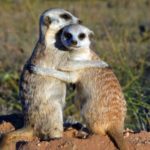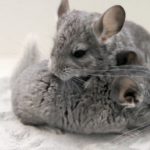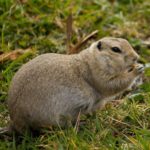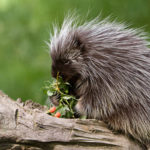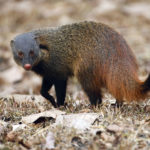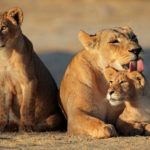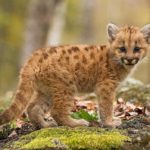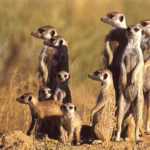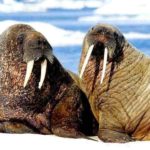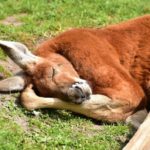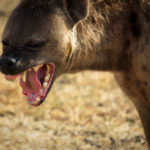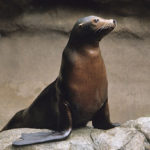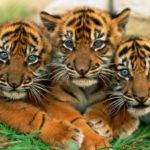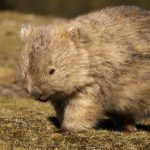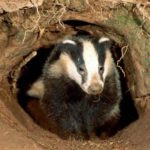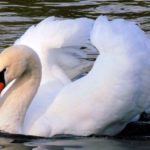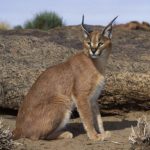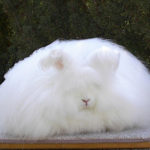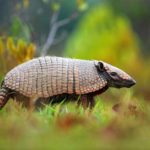Meerkats – information
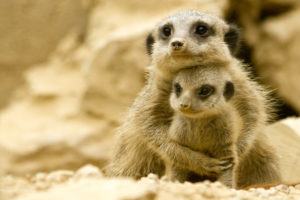 Meerkat is the smallest member of the mongoose family. The total length of their body, covered with grayish-brown fur, is only 50-60 cm, half of which falls on a strong tail. Representatives of the female are somewhat larger than males, but they rarely reach a weight of 1 kilogram. The forelegs are much more developed than other members of the family. They serve both for the extraction of food, and for digging holes where the animals live. The developed third eyelid reliably protects the animal’s eyes from the ingress of sand, and long vibrissae help to navigate in the dark corridors of the dwelling.
Meerkat is the smallest member of the mongoose family. The total length of their body, covered with grayish-brown fur, is only 50-60 cm, half of which falls on a strong tail. Representatives of the female are somewhat larger than males, but they rarely reach a weight of 1 kilogram. The forelegs are much more developed than other members of the family. They serve both for the extraction of food, and for digging holes where the animals live. The developed third eyelid reliably protects the animal’s eyes from the ingress of sand, and long vibrissae help to navigate in the dark corridors of the dwelling.
The distribution area of the meerkats is the desert regions of South Africa. Animals are afraid of thickets and forests, preferring to settle either in open sandy terrain or in mountainous areas. Depending on this, they either dig out whole cities under the earth, or arrange a dwelling in natural caves.
Usually, the meerkats (pictured) live in families with an average of 30 individuals. At the head of each family is the dominant female. She directs literally everything, and only she has the right to reproduce. If any other female brings young, she can be expelled from the clan, which is equivalent to death.
Among the male population, there are skirmishes in the families of the meerkats, as a result of which the dominant male is determined, and only he has the opportunity to mate with the dominant female.
The offspring of the animal can be brought up to four times a year, but most often it is the rainy season, lasting from October to March. Pregnancy lasts 70-75 days, after which there are from two to five cubs (a small meerkat is generally charming, see the video below).
Each family has its own group smell, according to which the animals recognize each other. On the territory of the clan, which can stretch to three kilometers, there are several holes that are used alternately and are tagged with the help of special glands. Meerkats are distinguished by strong cohesion, they literally do everything together. This applies to nutrition, rest, caring for the cubs and protection of the territory.
